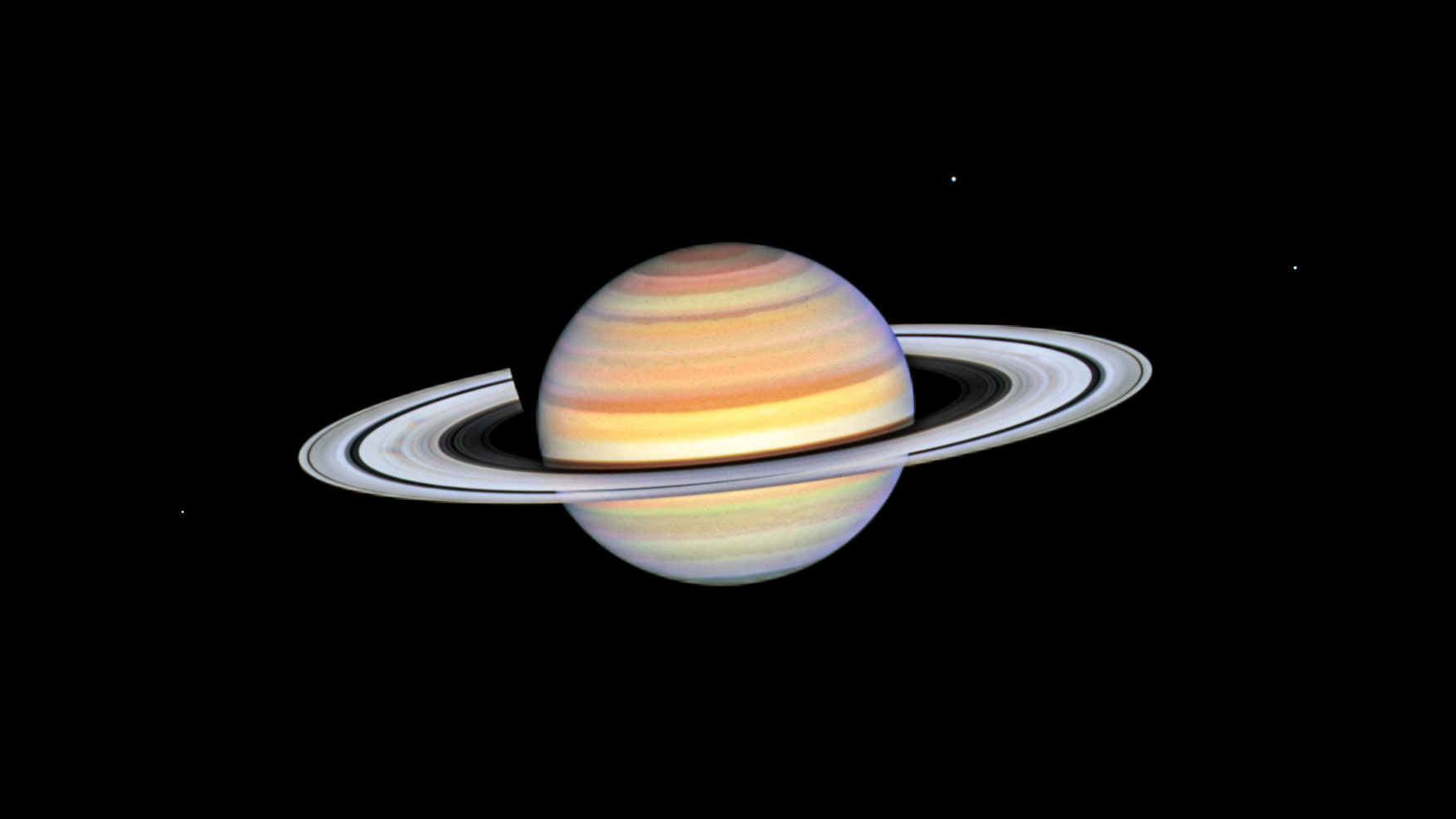5 min read
Cassini Finds Possible Origin of One of Saturn's Rings
August 2, 2007
(Source: Jet Propulsion Laboratory / Space Science Institute)
 |
A movie sequence of Saturn's G ring over a full orbital revolution captures its single bright arc on the ring's inner edge. + View Movie |
PASADENA, Calif. -- Cassini scientists may have identified the source of one of Saturn's more mysterious rings. Saturn's G ring likely is produced by relatively large, icy particles that reside within a bright arc on the ring's inner edge.
The particles are confined within the arc by gravitational effects from Saturn's moon Mimas. Micrometeoroids collide with the particles, releasing smaller, dust-sized particles that brighten the arc. The plasma in the giant planet's magnetic field sweeps through this arc continually, dragging out the fine particles, which create the G ring.
The finding is evidence of the complex interaction between Saturn's moons, rings and magnetosphere. Studying this interaction is one of Cassini's objectives. The study is in the Aug. 2 issue of the journal Science and was based on observations made by multiple Cassini instruments in 2004 and 2005.
"Distant pictures from the cameras tell us where the arc is and how it moves, while plasma and dust measurements taken near the G ring tell us how much material is there," said Matthew Hedman, a Cassini imaging team associate at Cornell University in Ithaca, N.Y., and lead author on the Science paper.
Saturn's rings are an enormous, complex structure, and their origin is a mystery. The rings are labeled in the order they were discovered. From the planet outward, they are D, C, B, A, F, G and E. The main rings -- A, B and C from edge-to-edge, would fit neatly in the distance between Earth and the moon. The most transparent rings are D -- interior to C -- and F, E and G, outside the main rings.
 |
This movie shows a bright arc of material flashing around the edge of Saturn's G ring, a tenuous ring outside the main ring system. + View Movie |
Unlike Saturn's other dusty rings, such as the E and F rings, the G ring is not associated closely with moons that either could supply material directly to it -- as Enceladus does for the E ring -- or sculpt and perturb its ring particles -- as Prometheus and Pandora do for the F ring. The location of the G ring continued to defy explanation, until now.
Cassini images show that the bright arc within the G ring extends one-sixth of the way around Saturn and is about 250 kilometers (155 miles) wide, much narrower than the full 5,955-kilometer width (3,700 miles) of the G ring. The arc has been observed several times since Cassini's 2004 arrival at the ringed planet and thus appears to be a long-lived feature. A gravitational disturbance caused by the moon Mimas exists near the arc.
As part of their study, Hedman and colleagues conducted computer simulations that showed the gravitational disturbance of Mimas could indeed produce such a structure in Saturn's G ring. The only other places in the solar system where such disturbances are known to exist are in the ring arcs of Neptune.
Cassini's magnetospheric imaging instrument detected depletions in charged particles near the arc in 2005. According to the scientists, unseen mass in the arc must be absorbing the particles. "The small dust grains that the Cassini camera sees are not enough to absorb energetic electrons," said Elias Roussos of the Max-Planck-Institute for Solar System Research, Germany, and member of the magnetospheric imaging team. "This tells us that a lot more mass is distributed within the arc."
The researchers concluded that there is a population of larger, as-yet-unseen bodies hiding in the arc, ranging in size from that of peas to small boulders. The total mass of all these bodies is equivalent to that of an ice-rich, small moon that's about 100 meters wide (328 feet wide).
Joe Burns, a co-author of the paper from Cornell University and a member of the imaging team, said, "We'll have a super opportunity to spot the G ring's source bodies when Cassini flies about 600 miles from the arc 18 months from now."
The Cassini-Huygens mission is a cooperative project of NASA, the European Space Agency and the Italian Space Agency. The Jet Propulsion Laboratory, Pasadena, Calif., manages the Cassini-Huygens mission for NASA's Science Mission Directorate, Washington. The Cassini orbiter and its two onboard cameras were designed, developed and assembled at the laboratory. The imaging team is based at the Space Science Institute, Boulder, Colo. The magnetospheric imaging instrument team is based at Johns Hopkins University, Laurel, Md.
G ring movies and images are available on the Internet at: http://www.nasa.gov/cassini , http://saturn.jpl.nasa.gov and http://ciclops.org .
Contacts:
Whitney Clavin 818-354-4673
Jet Propulsion Laboratory, Pasadena, Calif.
Preston Dyches 720-974-5859
Space Science Institute, Boulder, Colo.
NEWS RELEASE: 2007-085







